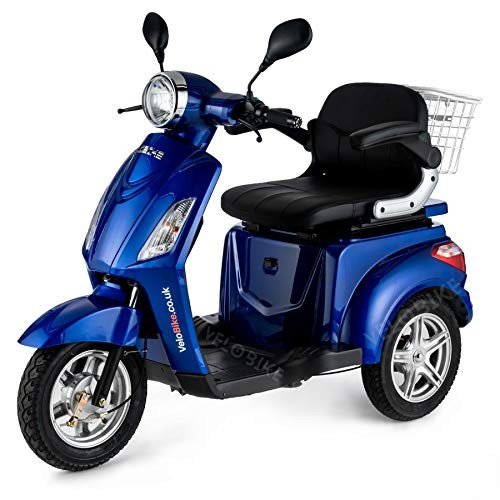10 Apps That Can Help You Control Your Mobility Scooter
Mobility Scooters: A Comprehensive Guide
Mobility scooters have ended up being a necessary mode of transport for many people dealing with mobility difficulties. This article explores the different facets of mobility scooters, including their types, benefits, functions, and a guide for prospective buyers.
Comprehending Mobility Scooters
Mobility scooters are electrically powered devices developed for individuals with limited mobility. They offer a method of transport for individuals who might have trouble walking but still wish to keep their independence. They come in different styles and features to accommodate a broad variety of requirements.
Types of Mobility Scooters
Mobility scooters can typically be classified into 3 main types:
Type
Description
Best For
Compact Scooters
These are small and lightweight, perfect for indoors and short trips.
Users with minimal storage area or those who take a trip frequently.
Mid-size Scooters
A balance between mobility and stability, suitable for both indoor and outdoor usage.
Those who need to cover a variety of terrains.
Sturdy Scooters
Large and robust, designed for rugged outdoor use and much heavier individuals.
Users requiring additional weight capability or going off-road.
Secret Features of Mobility Scooters
The option of mobility scooter typically depends upon the functions that line up with private needs. Here are a few of the crucial features to think about:
Weight Capacity: Mobility scooters include different weight limits. It is essential to pick a scooter that can adequately support the user's weight.
Variety: The distance a scooter can travel on a single charge differs. Depending on user requirements, one may choose scooters with a variety of approximately 40 miles.
Speed: Most mobility scooters can reach speeds between 4 to 8 mph. Consider what speed is comfy and safe for the desired environment.
Turning Radius: A compact turning radius is important for indoor usage, enabling easier navigation in tight areas.
Battery Type: The type of batteries utilized can affect the scooter's efficiency. Lead-acid and lithium-ion batteries are the most typical.
Benefits of Using Mobility Scooters
The benefits of mobility scooters extend beyond just transportation. Some crucial benefits include:
Independence: Users can navigate their environment without counting on caregivers, promoting self-reliance and self-confidence.
Health Benefits: Using a scooter can motivate outdoor activity, causing physical and mental health enhancements by lowering feelings of seclusion.
Convenience: Scooters can quickly be operated in numerous environments, whether indoors, in mall, or outdoors.
Crucial Considerations When Buying a Mobility Scooter
When acquiring a mobility scooter, several considerations can assist ensure that you select the ideal design:
Assess Individual Needs:
- Mobility level: Consider how much support the individual will need.
- Series of use: Determine where the scooter will mainly be used (inside your home, outdoors, on rough terrains, and so on).
Test Drive:
- Always test drive several models to find an ideal fit. Focus on convenience, ease of steering, and the scooter's responsiveness.
Review Safety Features:
- Look for scooters with sufficient safety features like lights, indicators, and anti-tip designs.
Check Warranty and Service Options:
- A reliable warranty and offered service choices are vital for long-lasting use.
FAQs about Mobility Scooters
**1. How quick do mobility scooters go?Mobility scooters generally have speeds varying from 4 to 8 miles per hour, with many created for security rather than high-speed travel. 2. Are there more info here on mobility scooters?Yes, mobility
scooters come with particular weight limits, often varying from
250 pounds to over 500 pounds, depending upon the model. 3. Can mobility scooters be used indoors?Certain models, particularly compact scooters, are particularly designed for
**indoor use and are much easier to steer in tight areas. 4. How often do the batteries require to be replaced?Battery life can vary based upon use, but generally, with appropriate care, batteries might last between 1 to 3 years before requiring replacement
**. 5. Are mobility scooters covered by insurance?Coverage can vary, but some insurance strategies, consisting of Medicare and Medicaid, may cover part of the expense. It's advised to consult specific insurance coverage service providers. Mobility scooters serve as a
valuable tool for many people, allowing them to preserve
their liberty and self-reliance. By comprehending the various types and features of mobility scooters, individuals can make educated choices tailored to their particular requirements.
Whether utilized for errands, mingling, or leisurely activities, mobility scooters can enhance the quality of life for those with mobility limitations. Investing in a mobility scooter is a choice that can substantially affect an individual's life. For that reason, people must thoroughly examine their options and select a design that best lines up with their way of life and mobility requirements
.  ******
******